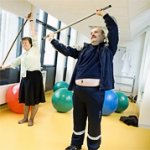Re: Bad Science (off-topic)
Off topic - sorry - but oceanblue's post in this thread has got me back up on another hobby-horse...
I also think this would be great material for Ben Goldacre's
Bad Science blog and Guardian column (as opposed to the Bad Science forums). If he ran the story it would make quite an impact - and I believe the column is well-read within the scientific community too.
That would be perfect, please somebody do give this a go and send him our best analysis, but I hold out no hope at all there myself.
It sounds like a pipe-dream to me. It really, really would be the impact we're looking for. It is exactly the place where the story should appear. It is exactly the newspaper that should be 'guarding' us. Goldacre's purported agenda of exposing bad science is exactly where we would expect to turn for support here.
Unfortunately, it's not about that at all, as far as I can see. He seems more interested in attacking those things against which he's prejudiced and defending the scientific status quo from anything "a bit weird". He seems to have the same agenda about neuroscience, mind/body etc as the Wessely crowd. He seems to me to be a part of the same mob. They seem to all be joined at the hip.
This is near enough the epicentre of the problem for us in the UK IMO. Who would we expect to defend us if not the Guardian? That's
exactly where I expect to find our support - but instead I find this man, who looks to me like nothing but a wolf in sheep's clothing who is busy pulling the wool over everyone's eyes and merely
pretending to be the very thing we so desperately need.
What hope for us, and what place in the Guardian, for a man who hosts an online forum (don't buy into the line of 'nothing to do with me guv, I just host it under the name of my book') with a main section dedicated to:
"The Great British Sport of moron-baiting"
Is this Guardian journalist morality in the post-modern era? Should it have been renamed "New Guardian" when it got its makeover, perhaps?
From everything I've seen, Goldacre and his army go after whatever they deem 'bad science' with aggression, rudeness, disrespect and a massive dose of swearing to make everybody laugh and switch off their brains. I'm judging mainly by the BS forum, some Goldacre videos, and Martin J. Walker, so my sources are limited I admit, but from everything I've seen and heard on the forum especially, they determine what is 'bad science' primarily in accordance with their prejudices, their assumptions, and what they 'just know' to be absolute rubbish. The confirmation bias in their way of thinking is enormous; their arrogance breathtaking; their rudeness and disrespect disgusting to me. I see almost no genuine critical thinking, thoughtful or sober scientific critique in the movement - just a crusade for the
concept of science as they understand it, and violently against any other way of looking at the world. And the movement is so easily exploited by vested interests that even the really good science, emerging science, and human-focused science gets trampled underfoot. That's the way the movement he's part of looks to me.
BUT: LET HIM PROVE ME WRONG!
If Goldacre's column - or any other Guardian journalist indeed - addresses the PACE trial and rips it to shreds, exposes how CBT/GET is a con, how any attempt at biomedical research into ME/CFS has been suppressed, and how a group of severely ill people have been brushed under the carpet to save money, for decades....well I'll believe it when I see it...and I'll be delighted to have been proved wrong and made to look foolish. And I'll celebrate with the loudest whoops and cheers of delight - because we will finally be cooking with gas.
I might even start buying and reading the thing again; until then, I simply don't trust it any more.
If there really still was a 'Guardian', would we still be in the mess we're in now?
http://www.scribd.com/doc/8401751/C...n-Goldacre-Quackbusting-and-Corporate-Science

